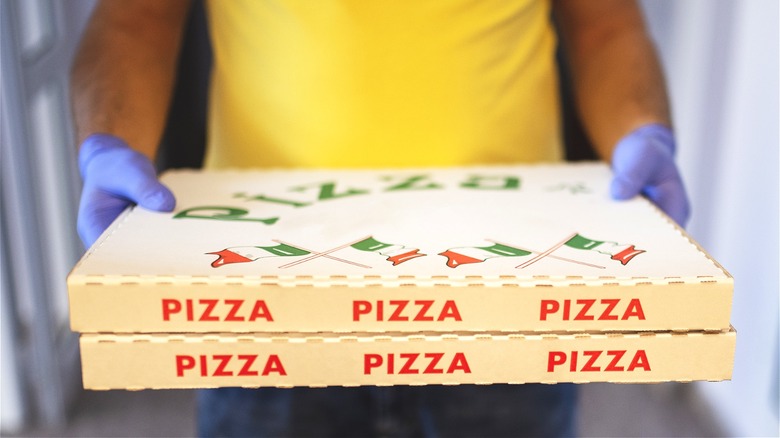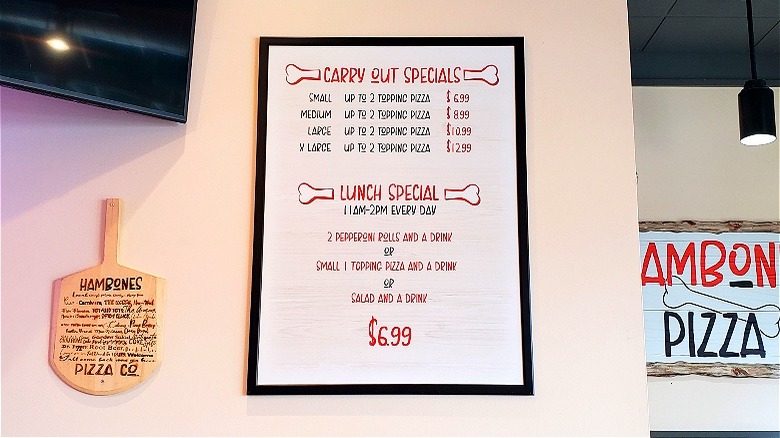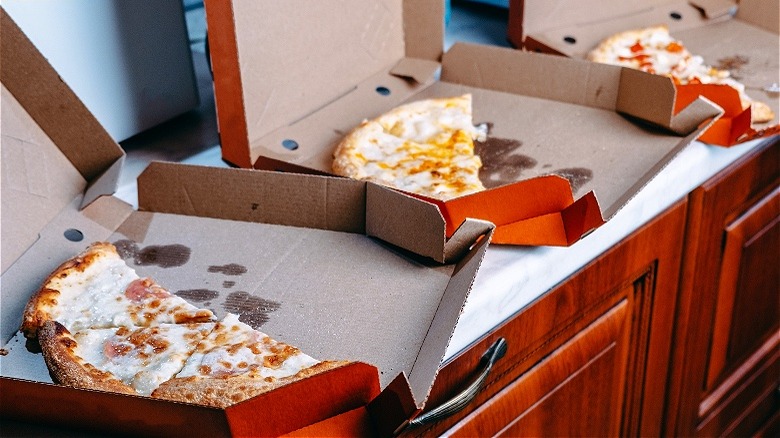Use This Money-Savvy Tool The Next Time You Order Pizza. Here's Why
It's been said on some internet message boards that there exists no such thing as bad pizza. Another pizza-ism states that even when pizza is bad ... it's still pretty good. This doughy, cheesy concoction was invented in its current form in Naples, Italy, during the 18th century. Nowadays, pizza beats out french fries, mac and cheese, and chicken wings on a list of Americans' favorite foods, according to Grubhub (via Reader's Digest). In fact, pizza chain Pizza Hut reports that Americans, on average, eat pizza three times a month, with North Dakota the biggest pizza fan in the entire U.S. (at 3.5 times a month).
While buying a pizza certainly isn't on the same level as purchasing a house (here are popular myths about buying a house), a brand-new car, or even buying a new device from Apple, there's still a trick you can use to stretch your budget and keep more, uh, dough in your pocket. It's called the Pizza Size Calculator, which informs you which size pie at any given store is the best value. But first, let's take a closer look at why ordering a larger pizza than is strictly necessary may be a wallet-savvy move.
Sometimes, pizza pricing doesn't make sense
The way the area within a circle is measured means that a seemingly small increase in diameter can result in a lot more pizza. For instance, an 8-inch diameter small size pizza has an area of 50 square inches, while a 12-inch medium pizza has an area of 113 square inches. That means that the medium pizza is more than double the size of its small counterpart, yet the price difference between the two may only be a few dollars, and almost certainly not twice as expensive.
Extrapolating our data a couple steps further, a 14-inch large pizza has an area of around 154 square inches, while a colossal 16-inch extra-large pizza rings in at 201 square inches. In a real-life example of pizza arbitrage, a Pizza Hut franchise in Denver charges $13.69 for a 12-inch medium cheese pie and $15.29 for a 14-inch large. That is only approximately 10.5% more money for 36% more pizza, which is a no-brainer.
With that in mind, it might be tempting to assume that buying the largest size pizza is always the most economical move. Be careful, however, because that's not always true. Occasionally, those larger pies might be priced appropriately after all, which will negate any savings. Plus, you'll have to eat leftover pizza for breakfast, lunch, and dinner for a day or two. Actually, that doesn't sound so bad.
You don't have to personally do the math
If you want to know definitively which size pizza represents the best value, well ... there's a website for that. Omni Calculator offers more than 3,700 free online calculators to figure out everything from complex trigonometry to your body mass index. And of course, which size pizza represents the best value for your money. To use it, simply input two different pizza sizes you're considering and their respective prices and voila, the calculator will let you know which is the better buy. Typically, but not always, it'll be the larger size. Note, the two comparison pizzas don't have to be from the same store for the calculator to work, either.
If it's a different type of pizza calculator you're looking for, Instacart offers a helpful widget to determine how many pizzas and what size pies to buy based on the number of adults and children you're feeding. While that might not be necessary for your next family pizza night, it can be really helpful if you're feeding a crowd, like at a party or a work luncheon. You can even refine your recommendations by hunger level and crust thickness.
For more tips on stretching your dining dollars, check out our list of 14 restaurant tricks that will save you money. Now, where is that body mass index calculator? All this pizza talk is making us hungry.


